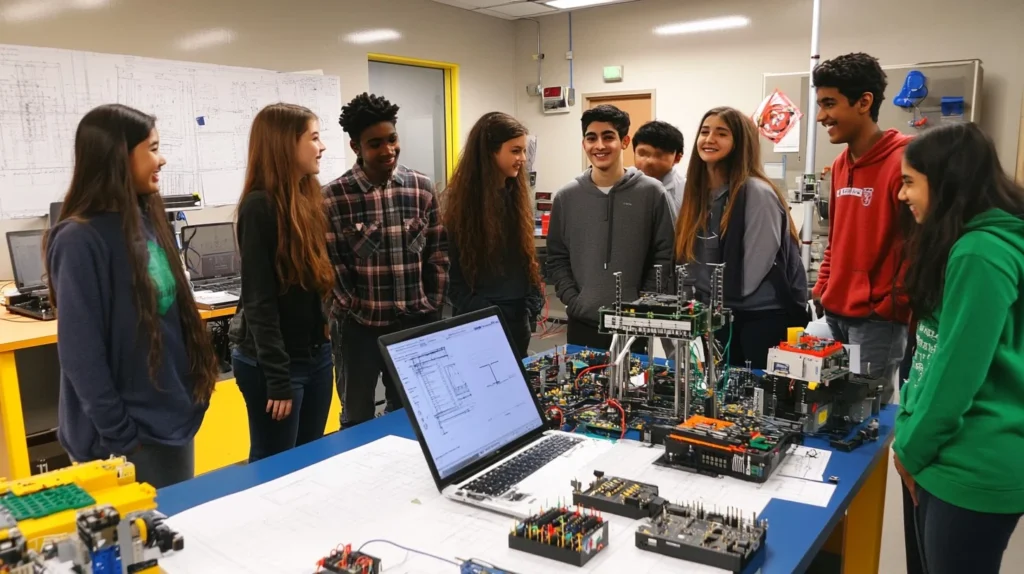science, Technology, Engineering, and Mathematics (STEM) fields are at the forefront of innovation and progress. Yet, despite their critical importance, these fields have long struggled with diversity. Underrepresentation of women, ethnic minorities, and other marginalized groups is a persistent challenge that STEM diversity initiatives aim to address. By fostering equitable access and robust support systems, these initiatives help create inclusive environments where everyone can thrive.
Why STEM Diversity Matters
Diverse teams bring a wealth of perspectives that drive creativity and innovation. Research shows that inclusive groups outperform homogenous ones, solving complex problems more effectively. Furthermore, providing equitable access to STEM education and careers promotes social justice by dismantling systemic barriers rooted in race, gender, and socioeconomic status.
Understanding the Barriers to STEM Inclusion
Several factors contribute to underrepresentation in STEM:
- Educational Inequities: Many underrepresented students attend schools lacking STEM resources or advanced courses.
- Stereotypes and Bias: Persistent misconceptions about who belongs in STEM discourage participation.
- Lack of Role Models: Without mentors or visible figures from similar backgrounds, students feel isolated.
- Financial Constraints: Costs related to higher education and training can be prohibitive.
- Workplace Culture: Unwelcoming environments and unconscious bias can push diverse talent out.
Key STEM Diversity Initiatives Making an Impact
1. Inclusive STEM Education Programs
Many schools and organizations focus on creating curricula and extracurricular programs that engage diverse students early on. Initiatives like after-school coding clubs, robotics teams, and science camps provide hands-on experience that builds confidence and skills.
2. Mentorship and Sponsorship
Connecting students and young professionals with mentors who share similar backgrounds helps navigate challenges. Mentorship boosts retention and career advancement, while sponsorship actively promotes opportunities for underrepresented individuals.
3. Scholarship and Financial Aid Opportunities
Targeted scholarships and grants reduce financial barriers, enabling more students from marginalized communities to pursue STEM degrees without the burden of overwhelming debt.
4. Employer Diversity Programs
Many companies implement hiring goals, unbiased recruitment practices, and inclusive workplace policies. Employee resource groups and diversity training foster a culture where all voices are valued.
5. Community Outreach and Partnerships
Collaborations between educational institutions, nonprofits, and industry help extend resources and opportunities to underserved populations. These partnerships often include STEM fairs, workshops, and internships.
Supporting Underrepresented Groups: Beyond Access
Equity in STEM isn’t just about opening doors; it’s about sustained support:
- Creating Safe, Inclusive Spaces: Learning and work environments must be welcoming, free from discrimination and microaggressions.
- Professional Development: Ongoing training and networking equip diverse talent to progress into leadership roles.
- Addressing Intersectionality: Recognizing overlapping identities (race, gender, disability, socioeconomic status) ensures initiatives meet varied needs.
- Tracking Progress: Data collection and research help tailor programs effectively and demonstrate their impact.
Real Stories of Change and Success
Highlighting success stories inspires new generations. For example, initiatives empowering women of color in engineering have led to increased graduation rates and industry placements. Similarly, programs focused on rural or low-income students have opened pathways previously unseen.
The Road Ahead: Sustaining Momentum for STEM Equity
Achieving true diversity in STEM requires collaborative, long-term commitment. Policymakers, educators, employers, and communities must continuously innovate and invest in inclusive strategies. Technology itself can be leveraged to expand access, such as virtual learning platforms that reach remote areas.
Moreover, challenging cultural norms and biases at every level strengthens the foundation for systemic change.
Conclusion
STEM diversity initiatives are crucial tools for building an equitable future in science and technology. By providing fair access, meaningful support, and recognizing the unique challenges of underrepresented groups, these programs help create a richer, more innovative STEM landscape where everyone has the chance to succeed.
Take Action:
Whether you’re an educator, employer, student, or advocate, you can contribute to advancing STEM diversity. Support inclusive programs, mentor someone from an underrepresented group, or promote equitable policies in your sphere. Together, we can unlock the full potential of every mind in STEM.






